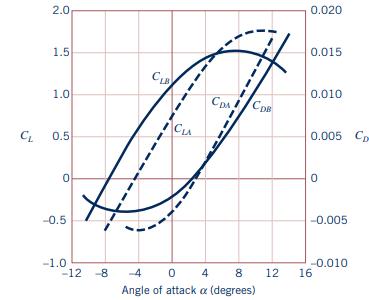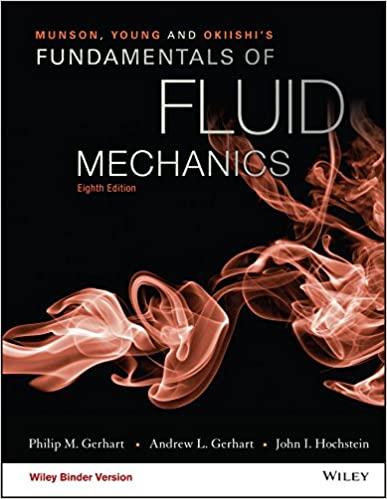A design group has two possible wing designs ((A) and (B) ) for an airplane wing. The
Question:
A design group has two possible wing designs \((A\) and \(B\) ) for an airplane wing. The planform area of either wing is \(130 \mathrm{~m}^{2}\) and each must provide a lift of \(1,550,000 \mathrm{~N}\).
Figure P9.108

The airplane is to fly at \(700 \mathrm{~km} / \mathrm{hr}\) at an altitude of \(10,000 \mathrm{~m}\) in the Standard Atmosphere. The lift and drag coefficients are shown in Fig. P9.108. Both sets of lift and drag coefficients give the total lift \(\mathscr{L}\) and the total drag \(\mathscr{D}\) on the airplane per unit area of the wing so that \[ \mathscr{L}_{\text {airplane }}=\frac{1}{2} C_{L} ho A_{\text {wing }} V^{2} \]
and \[ \mathscr{D}_{\text {airplane }}=\frac{1}{2} C_{D} ho A_{\text {wing }} V^{2} \]
where \(V\) is the airplane velocity. Which wing design would you recommend? Support your recommendation.
Step by Step Answer:

Munson Young And Okiishi's Fundamentals Of Fluid Mechanics
ISBN: 9781119080701
8th Edition
Authors: Philip M. Gerhart, Andrew L. Gerhart, John I. Hochstein





